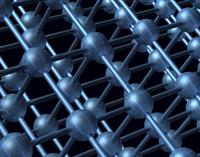Home > Press > Are silver nanoparticles harmful?
 |
Abstract:
Silver nanoparticles cause more damage to testicular cells than titanium dioxide nanoparticles, according to a recent study by the Norwegian Institute of Public Health. However, the use of both types may affect testicular cells with possible consequences for fertility.
Are silver nanoparticles harmful?
Oslo, Norway | Posted on March 14th, 2012Commonly used
Nanotechnology is increasingly used in consumer products, medicines and building products. The potential risks of using engineered nanoparticles need to be monitored so that the industry can develop products that are safe for humans and nature.
Previous research has shown that nanoparticles can cross both the blood-brain barrier and blood-testes barrier in mice and rats, and are taken up by cells. This study aimed to see if silver and titanium dioxide nanoparticles had any effect on human and mice testicular cells.
The researchers found that silver nanoparticles had a toxic effect on cells, suppressing cellular growth and multiplication and causing cell death depending on concentrations and duration of exposure. The effect was weaker for titanium dioxide nanoparticles, although both types did cause cell type-specific DNA damage, with possible implications on reproduction as well as human and environmental health.
"It seems that the type of nanoparticle, and not the size alone, may be the limiting factor" says Nana Asare, primary author of the study published in Toxicology.
Further studies using in vivo models are needed to study the impact of nanoparticles on reproductive health.
About the study
The researchers used cells from a human testicular carcinoma cell line and testicular cells from two strains of mice, one of which is genetically modified to serve as a representative model for human male reproductive toxicity. The cells were exposed to titanium dioxide nanoparticles (21nm) and two different sizes of silver nanoparticles (20 nm and 200nm) over different concentrations and time periods. Both sizes of silver nanoparticles inhibited normal cell function and caused more cell death than the titanium dioxide nanoparticles. In particular, the 200 nm silver particles caused a concentration-dependent increase in DNA damage in the human cells.
Reference
Asare N, Instanes C, Sandberg WJ, Refsnes M, Schwarze P, Kruszewski M, Brunborg G. Cytotoxic and genotoxic effects of silver nanoparticles in testicular cells. Toxicology, 291: 65-72 (2012)
Nano facts
- Nanotechnology is technology on the atomic and molecular scale
- A nanometre (nm) is one billionth of a metre
- A nanoparticle is a particle with one or more external dimensions in the size range 1 nm - 100 nm
- The aspect ratio between a nanoparticle and a football is similar to that between a football and the Earth
- Nanotechnology is working on a scale of 100 nm (which corresponds approximately to the size of a virus) down to the size of atoms, about 0.1 nm
- Nano-scale materials and processes are present in nature, ranging from free molecules in gases and liquids to proteins and organic processes
- Some substances are produced unintentionally, such as welding dust and diesel particulates
####
For more information, please click here
Contacts:
Norwegian Institute of Public Health
PO Box 4404
Nydalen, N-0403 Oslo
Phone: +47 21077000
Fax: +47 22353605
Copyright © Norwegian Institute of Public Health
If you have a comment, please Contact us.Issuers of news releases, not 7th Wave, Inc. or Nanotechnology Now, are solely responsible for the accuracy of the content.
| Related Links |
![]() Cytotoxic and genotoxic effects of silver nanoparticles in testicular cells (PubMed):
Cytotoxic and genotoxic effects of silver nanoparticles in testicular cells (PubMed):
| Related News Press |
News and information
![]() Simulating magnetization in a Heisenberg quantum spin chain April 5th, 2024
Simulating magnetization in a Heisenberg quantum spin chain April 5th, 2024
![]() NRL charters Navy’s quantum inertial navigation path to reduce drift April 5th, 2024
NRL charters Navy’s quantum inertial navigation path to reduce drift April 5th, 2024
![]() Discovery points path to flash-like memory for storing qubits: Rice find could hasten development of nonvolatile quantum memory April 5th, 2024
Discovery points path to flash-like memory for storing qubits: Rice find could hasten development of nonvolatile quantum memory April 5th, 2024
Discoveries
![]() Chemical reactions can scramble quantum information as well as black holes April 5th, 2024
Chemical reactions can scramble quantum information as well as black holes April 5th, 2024
![]() New micromaterial releases nanoparticles that selectively destroy cancer cells April 5th, 2024
New micromaterial releases nanoparticles that selectively destroy cancer cells April 5th, 2024
![]() Utilizing palladium for addressing contact issues of buried oxide thin film transistors April 5th, 2024
Utilizing palladium for addressing contact issues of buried oxide thin film transistors April 5th, 2024
Announcements
![]() NRL charters Navy’s quantum inertial navigation path to reduce drift April 5th, 2024
NRL charters Navy’s quantum inertial navigation path to reduce drift April 5th, 2024
![]() Discovery points path to flash-like memory for storing qubits: Rice find could hasten development of nonvolatile quantum memory April 5th, 2024
Discovery points path to flash-like memory for storing qubits: Rice find could hasten development of nonvolatile quantum memory April 5th, 2024
Safety-Nanoparticles/Risk management
![]() Tests find no free-standing nanotubes released from tire tread wear September 8th, 2023
Tests find no free-standing nanotubes released from tire tread wear September 8th, 2023
![]() Billions of nanoplastics released when microwaving baby food containers: Exposure to plastic particles kills up to 75% of cultured kidney cells July 21st, 2023
Billions of nanoplastics released when microwaving baby food containers: Exposure to plastic particles kills up to 75% of cultured kidney cells July 21st, 2023
|
|
||
|
|
||
| The latest news from around the world, FREE | ||
|
|
||
|
|
||
| Premium Products | ||
|
|
||
|
Only the news you want to read!
Learn More |
||
|
|
||
|
Full-service, expert consulting
Learn More |
||
|
|
||








